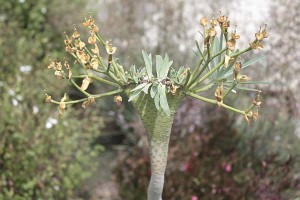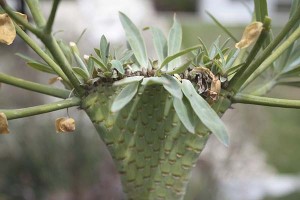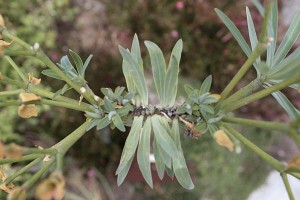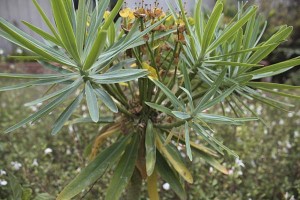I’m almost ready to blame this freaky mutant on fallout from the Fukushima Daiichi reactor disaster.
On my way to the office, several times a week, I walk past a cultivated patch of Hooker’s evening primrose, Oenothera elata. A few days ago I noticed this mutant crested growth on the central growing point on one of the plants. I’ve noticed this crested growth pattern in the garden a few times, most recently on a euphorbia. But this is the first time I’ve noticed it on a primrose–or any other local native plant for that matter.
In a case of crested growth, the growing tip on a stem, the apical meristem, changes from a single growth point to a growth all along a broad line of cells. As the cells along the line grow, the plant forms a fan-shaped growth instead of a slender stem.
In this second photo you can see a normal stem to the right for comparison: slender normal stem, big fat mutant stem.
And here you can see the crested stem from the side and how it widens as it rises.
Pretty weird, huh?







